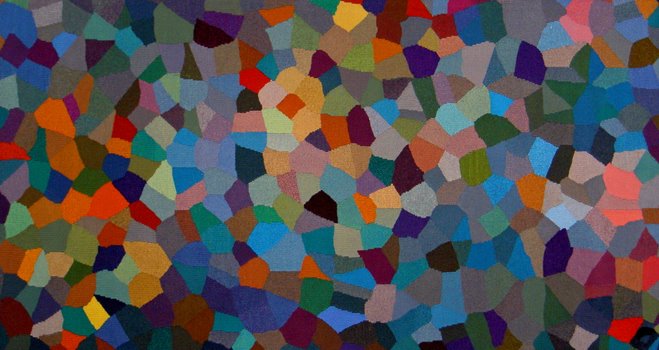
A Place in the Sun
2' x 4'
Collection of Miriam Grasby, Montreal
"Art work.....teaches the process of all creating, the shaping out of the shapeless. We learn from it that no picture exists before it is done, no form before it is shaped. The conception of a work gives only its temper, not its consistency. Things take shape in material and in the process of working it, and no imagination is great enough to know before the works are done what they will be like.
We come to know in art that we do not clearly know where we will arrive in our work, although we set the compass, our vision; that we are lead in going along, by material and work process. We have plans and blueprints, but the finished work is still a surprise. We learn to listen to our voices; the the yes or no of our material, our tools, our time. We come to know that only when we feel guided by them our work takes on form and meaning, that we are misled when we follow our will. All great deeds have been achieved under a sense of guidance.
We learn courage from art work. We have to go where no one was before us. We are alone and we are responsible for our actions. Our solitariness takes on religious character; this is a matter of my conscience and me.
We learn to dare to make a choice, to be independent. There is no authority to be questioned. In art work there is no established conception of work. Any decision is our own, any judgement....In making our choice(s) we develop a standpoint. How much of today's confusion is brought about through not knowing where we stand, through the inability to relate experiences directly to us. In art work any experience is immediate. We have to apply what we absorb to our work of the moment. We cannot postpone the use of what we learn. Much of our education today prepares us for a later day.
We learn to trust our intuition....we have to rely on inner awareness.....We learn patience and endurance in following through a piece of work. We learn to respect material in working it. Formed things and thoughts live a life of their own; they radiate a meaning. They need a clear form to give a clear meaning. Making something become real and take its place in actuality adds to our feeling of usefulness and security. Learning to form makes us understand all forming.....
The difficult problems are the fundamental problems; simplicity stands at the end, not at the beginning of a work. If education can lead us to elementary seeing, away from too much and too complex information, to the quietness of vision and discipline of forming, it again may prepare us for the task ahead, working for today and tomorrow.
Taken from Anni Albers: On Designing, p31-33 Weslaeyan University Press, Middleton Connecticut






